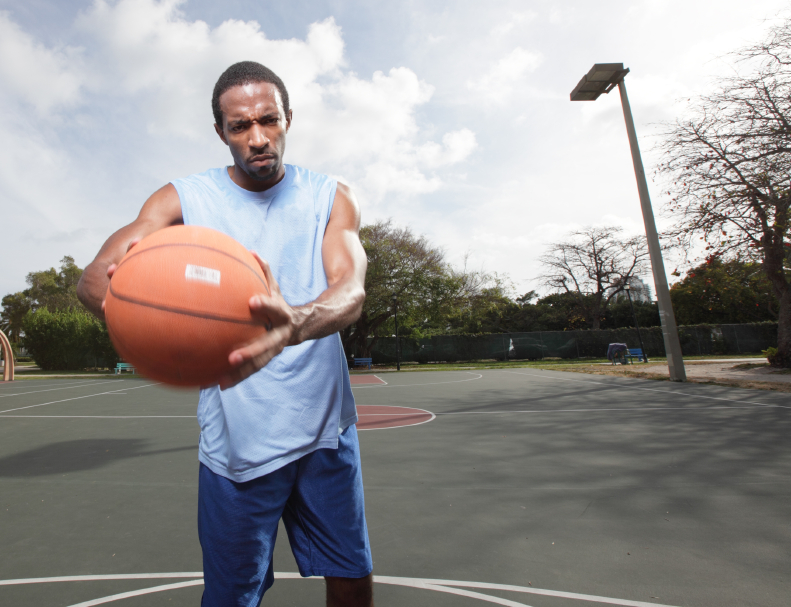
Basketball is the second most popular sport in the United States after football. That’s not counting the millions of players in backyard or schoolyard games— or the 1.6 million injuries racked up to the sport each year.
Basketball has been around for over a century, devised by a Presbyterian minister in Springfield, Massachusetts, using a soccer ball and two peach baskets. Each team had nine players. When a basket was scored, the janitor trotted out with a ladder to retrieve the ball. After a while, the bottom was cut out of the peach baskets.
What today’s game has in common with that early start is the name (basketball) and not much else. Metal hoops, nets and backboards had yet to be added. Moreover, while the game was envisioned as less apt to cause injury than football, according to Forbes magazine, basketball is the top sport for injuries.
The popularity of the game spread like wildfire via the YMCA network and World War I. Today, a CBS website not only ranks college and professional teams, but keeps a daily tab on which players are out with injuries.
Marcus Paige: hand. Dylan Ennis: foot. Dennis Smith Jr.: ACL . . . .
We could go on, but we’d be here a while. More than one in five basketball players will be forced to take some time off this year.
Every Body Part Is Vulnerable in Basketball
Basketball players are not shielded by heavy body armor like football players. They don’t wear masks or gloves like hockey players. While they don’t use sticks or bats either, the game is played— fast!— on a hard, wooden, waxed surface where a twisted ankle can send an off-balance player down writhing. As in many sports, injuries tend to fall into two categories— overuse injuries and trauma. With overuse, the body part (the patellar tendon, for instance, called ‘jumper’s knee’) has been stressed to the breaking point. When the injury occurs, it’s the result of much pounding and stretching.
Traumatic injuries are more obvious. An ankle sprain, jammed fingers, torn anterior cruciate ligament (ACL) . . . are usually dramatic and very noticeable by players and spectactors alike.
Sports Medicine Rules to Play By
While basketball is associated with a whole range of different injuries, some types stand out. Forty-two percent of injuries occurred in the ankle or foot; 11% affected the hip or thigh; 9% were to the knee. Sprains were the most common injury, and more than half— 60%— happened during practice. (This highlights the need to warm up adequately for each practice session.) Almost the same percentage (59%) of injuries took place during the second half of the game, which suggests that fatigue was a factor.
There are ways to minimize the chances of getting hurt:
 Players should have a pre-season physical exam to check for existing weakness.
Players should have a pre-season physical exam to check for existing weakness.- Fitness should be maintained year-round, not just during season.
- Young players should be encouraged to cross-train and not focus on one sport.
- Make sure the player is drinking enough water and getting enough rest.
- After a period of inactivity, players should return gradually to their former level.
Keeping Young Players in the Game
Basketball players are as eager to be back on the floor as participants in most sports. Don’t even try to tell a high school star that he will miss part of the season. (She’d probably rather sit for an exam.)
There are things that coaches and parents can do to help avoid any disruption: See that players warm up before practice or play. Make sure his or her equipment fits, and is in good condition.
Encourage players to wear protection such as knee and elbow pads. Most important: no tripping, blocking, charging or pushing. Practice good sportsmanship and enjoy the game!











